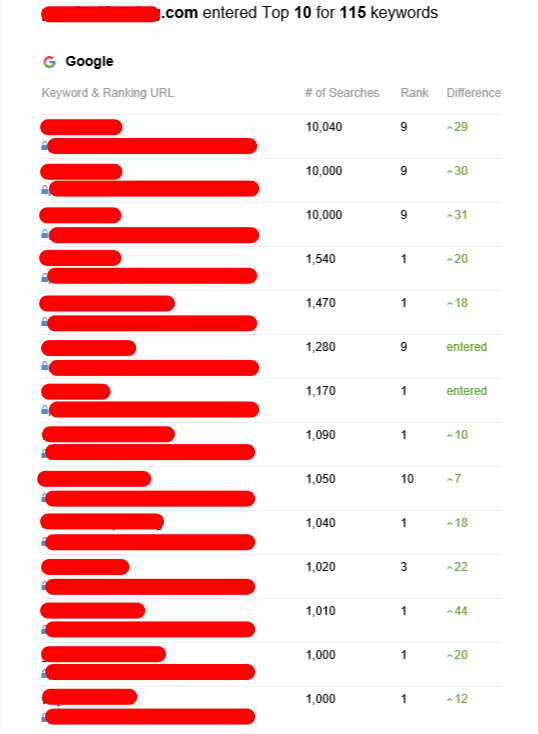Backlink Tier – The Hierarchy of Backlinks That Scale Your SEO Campaign
Backlink tier refers to the hierarchy of links that you design to expand your SEO campaign. Each level provides a layer of protection against Google and its penalties.
Tiered link building takes a lot of time and effort to get the process right. Google takes weeks to discover and evaluate new backlinks.
First-Tier Links
These links must be of a high quality and dofollow links from reputable websites. These are referred to as Tier 1 backlinks, and they form the basis of your link-building strategy. They give your site enough domain authority to rank well on search engine result pages. If, for example, your blog article was published on HubSpot and included a tier-one link to SearchEngineLand’s compilation of Link Building Statistics then SearchEngineLand’s website rankings will benefit from the link equity that HubSpot transferred to SearchEngineLand.
The second tier could be more varied and include low-quality backlinks such as spammy forums, or bookmark sites with low value and directories. The main objective of Tier 2 is to create content of high-quality that links back to your first-tier links. This is because content that is of high quality can enhance the content it is placed in, and Tier 2 links not stand out as an addition to SEO purposes.
To create a successful tiered marketing campaign, you’ll require investment in high-quality tools and content such as RankerX or GSA. The time and expense of manually performing a tiered campaign is worth it if you wish to see the increase in rankings of a well designed backlink pyramid.
Second-Tier Links
Tiered link building is intended to allow users to navigate through other pages and then reach your website. It is essential to select relevant second-tier backlinks sources that are relevant to both your business and your website for this to work. In contrast to account profiles guest blog posts work well in this regard since they provide information that users want to consume.
You should avoid using the tier-2 links on forums or other sites that aren’t of high quality. Choose pages that are of high-quality for articles in the industry or guest posts. These links will appear more natural and will have a greater impact on your search engine ranking. They’re also more likely to be regarded as having been able to pass link equity by Google, which can increase the value of their rank in SERPs.
If you build tier two links with the intention of increasing your SEO rankings it is important to be aware that it is difficult to acquire these types of high-quality backlinks on your own. It could take a few months to submit guest posts to top publishers and even longer for them to get published. In addition, it can take weeks to see results of your efforts in increasing traffic to your site and conversions.
Many SEOs make use of automated tools to create second-tier backlinks. This technique could violate Google’s Webmaster Guidelines and result in an enactment of penalization.
Third-Tier Links
The volume of links at this level is huge and could be borderline spammy. They are published on social media platforms, as well as user-generated content sites like Quora. They are used to index tier 2 links however they do not pass link equity onto the resource that is promoted. These are usually nofollow links. In this stage, marketers focus more on quantity rather than quality. They make use of tools to post numerous links on forums, in comment sections of articles and blog posts, in directories and in other similar locations. This is where tiered link building becomes a gray area and violates Google’s webmaster guidelines.
Link-building campaigns that are classified require a lot of time and effort to be successful. Google can take months or even days to rank an backlink. It could take weeks or even months for an SEO impact to be evident. Marketers must be patient and employ a meticulously-planned content strategy.
Marketers should avoid using too many automated tools to achieve this level of linking. These tools can break the rules of search engine optimization and lead to penalties. It is best to manually select links and then post them on relevant donor websites instead of using automated systems such as GSA or RankerX. This will stop search engines from penalizing you with poor quality links.
Fourth-Tier Links
Tiered link building is still a popular method to boost website rankings. Since Google has made significant efforts to eliminate “black-hat” SEO techniques, tiered link building methods have been affected.
They are classified as gray-hat SEO techniques and can be penalized for their unnatural use. Tiered links are backlinks built on different levels of a pyramid. The primary function of these backlinks is to boost the rank of a site promoted in search results. This way, the promoted web page will be more prominent than its rivals and gain more organic traffic.
This type of tier has a lower quantity of backlinks and is generally nofollow. Additionally the tier can consist of low-quality social directories, profiles and article networks. These links can be generated by hand or through strategic automation tools, however they should be diversified in terms of domains or niches they are in and the relevance.
 In addition to their low-quality, nofollow nature, they can also cause problems if they are not sufficiently diverse. This is because Google has a highly sophisticated group of hounds that are always looking for patterns in backlink profiles and techniques. If they are found, not only could the link-building team be penalized, but also its clients.
In addition to their low-quality, nofollow nature, they can also cause problems if they are not sufficiently diverse. This is because Google has a highly sophisticated group of hounds that are always looking for patterns in backlink profiles and techniques. If they are found, not only could the link-building team be penalized, but also its clients.
